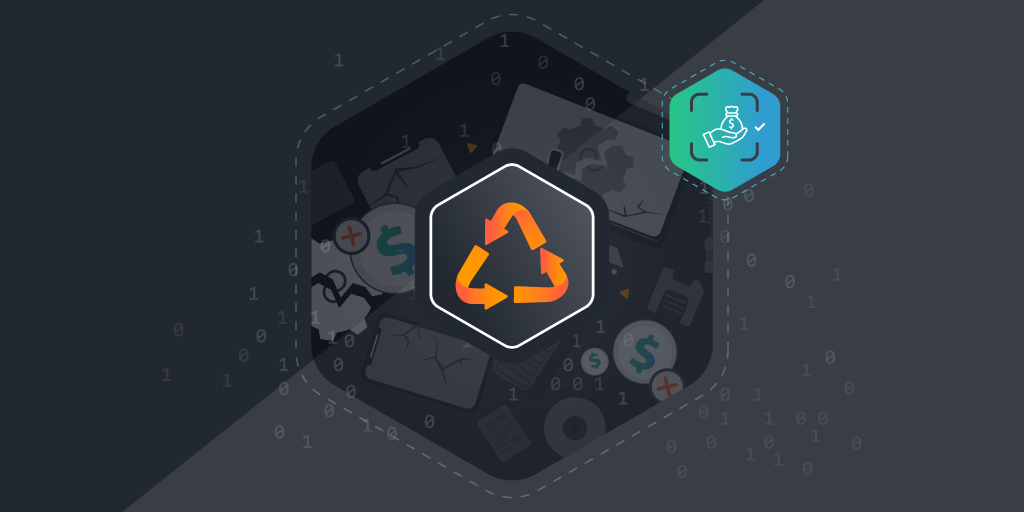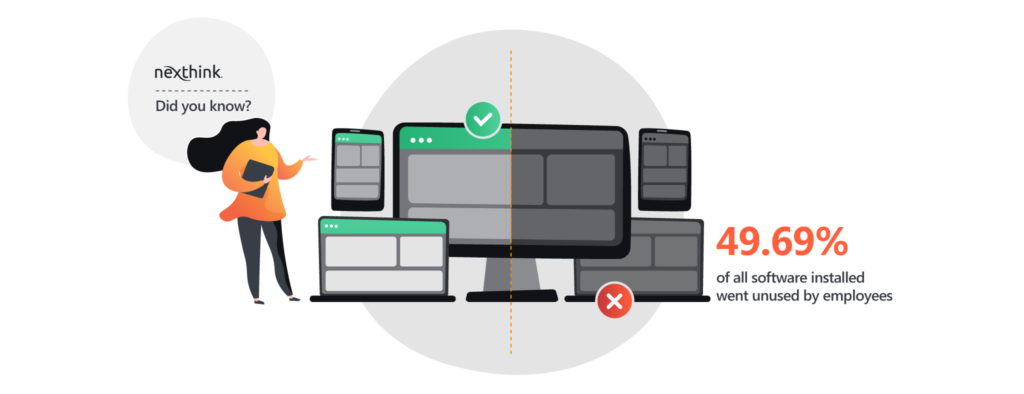
Every year, companies waste money on unused hardware and software assets. The amount of money wasted can vary widely depending on several factors, including the size of the organization, the nature of its operations and its IT procurement and management practices.
However, studies suggest that the cost of wasted IT spending can be significant. Let’s examine how IT waste accumulates in organizations, how you can identify and eliminate waste to save money using Lansweeper.
Why the Waste?
So, you might be thinking, “Why would an organization support a bunch of unneeded IT assets?” The answer is, they don’t know they’re doing it. Oftentimes, people leave a company and proper procedures aren’t followed to disable or reallocate their devices and software licenses. In some cases, acquisitions can lead to unnecessary IT spending if the acquiring company does not have a clear plan for integrating the IT systems of the two companies or if it invests in new technology that is not needed or redundant. This can result in inefficiencies, duplication of effort and increased costs.
Let’s look at a hypothetical real-world example: Say a company has 10,000 assets, and roughly 15% of them – or 1500 – are no longer or poorly used. The old hardware is likely fully depreciated, so eliminating them does not result in any positive cash impact; however,overall IT support overhead would be eliminated, because IT no longer has to support and maintain the 1500 old or unused assets. Considering support costs can be upwards of 40% of IT infrastructure costs, eliminating the need to spend money on supporting unused assets reduces costs by about 6% (15% of 40%).
According to a recent analysis, a single server costs an enterprise roughly between $500 to $1,000/year to maintain. That means eliminating 250 old and unused assets can potentially reduce IT support costs by about $250,000 annually. In five years, that number balloons to nearly $1,250,000 – and that’s not counting for inflation!
Now, let’s take this example a step further. Those old and unused hardware assets? They may be running software instances that are also going to waste. If you know what software is running on the servers and systems you’re retiring, you can renegotiate contracts with software vendors for additional savings. Typically, significant software savings can be realized when you have a complete inventory of the software assets your organization uses, and leverage that information to look for ways to bundle licenses and lower the overall cost of your software. And if you think you can’t save a lot on eliminating unused software, think again. According to a recent report by Nexthink, nearly half (49.96%) of all software installed went unused by employees of the companies they surveyed. The report looked at 30 popular applications and used an average monthly licensing fee per user to determine these businesses were wasting about $45 million per month on unused software licenses.* That’s $537 million annually.

The Impact of Knowledge Loss
Knowledge loss can have a significant impact on IT spend, as well. When employees leave an organization or retire, they take with them valuable knowledge and expertise that may not be fully documented or transferred to other employees, resulting in a knowledge gap that can be difficult and expensive to fill. This can result in increased costs associated with IT support, training and maintenance, especially if there is a knowledge gap in the IT department. It may take longer for issues to be resolved, resulting in increased downtime and lost productivity.
Investments in training and skills development to get new employees up to speed can add to the costs, and meanwhile, employees’ lack of training can have an impact on IT’s ability to maintain the rest of the IT infrastructure in an efficient and cost-effective manner. The main problem, however, is the amount of unused and inefficient systems that IT continues to support, regardless of their lack of usefulness to the organization.
Identify and Eliminate IT Waste with Lansweeper
As the market’s leading technology asset intelligence solution, Lansweeper provides the comprehensive visibility an organization needs to cut costs and optimize spend across the technology infrastructure. Lansweeper is designed to help IT professionals manage and monitor network assets, including hardware, software, operational technology, IoT and virtual machines.
With Lansweeper, IT teams can discover and inventory all devices connected to their network, including servers, workstations, laptops, mobile devices, printers and other network devices – whether they’re being used or sitting idle. Lansweeper also detects installed software, including licenses and versions, and provides detailed information on hardware configurations and other system information. Importantly, Lansweeper detects shadow IT helping to identify areas for license consolidation, duplication and overlap.
Lansweeper’s intuitive automated asset discovery and inventory capabilities, customizable reporting, alerting and notifications, and remote access and control make it fast and efficient to manage complex IT infrastructures, reducing the impact of knowledge loss and minimizing the need for training. Lansweeper also integrates with other popular IT management tools, such as ServiceNow, SIEM and SOAR tools and JIRA, to provide a more comprehensive view of an organization’s IT environment.
“The time and cost savings we realize from using Lansweeper Cloud to collect and consolidate all technology asset data across all our properties is substantial. We gain unprecedented insights that help us optimize IT spend and performance across the enterprise.”